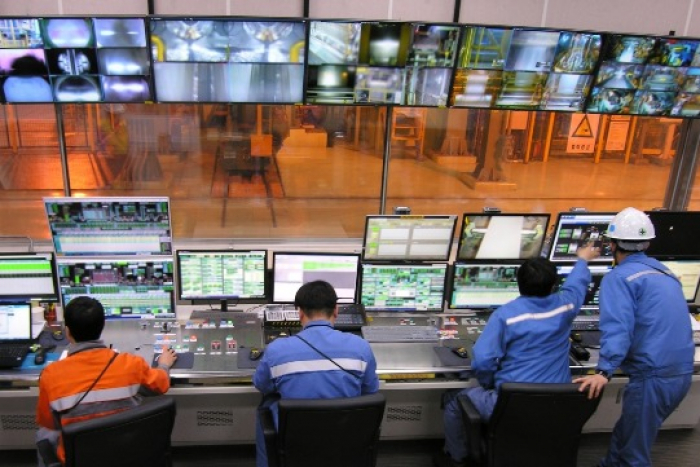Steel
POSCO decides to build electric furnace at Gwangyang Works
South Korea’s top steelmaker will start its low-carbon transition by launching the facility by 2026
By Feb 21, 2023 (Gmt+09:00)
1
Min read
Most Read
LG Chem to sell water filter business to Glenwood PE for $692 million


KT&G eyes overseas M&A after rejecting activist fund's offer


Kyobo Life poised to buy Japan’s SBI Group-owned savings bank


StockX in merger talks with Naver’s online reseller Kream


Meritz backs half of ex-manager’s $210 mn hedge fund



South Korea’s leading steelmaker POSCO on Tuesday said it will begin its transition to a low-carbon production system by building an electric furnace at the company’s Gwangyang Works in Gwanyang, South Jeolla Province.
The company’s regular board meeting on the day before approved a proposal to invest about 600 billion won ($463.3 million) to build the furnace at the plant with annual output capacity of 2.5 million tons.
Construction of the furnace will start in January next year and the company seeks to launch full-scale operations there by 2026.
“During the transition phase from the commercial application of hydrogen-lowering steel technology to replacement of the blast furnace process, we will continue our carbon reduction efforts by introducing an electric furnace,” POSCO said.
POSCO is also developing hydrogen-reducing technology based on HyREX (Hydrogen Reduction), a distinct and eco-friendly technology that the company developed that uses the advanced FINEX technology of flow reduction.
Last year, the company started designing a demonstration plant for reducing hydrogen levels during the steelmaking process.
POSCO’s mixing technology directly utilizes molten iron produced in an electric furnace or mixes it with molten iron made in a blast furnace to give off less CO2 emissions than the blast furnace method.
When the electric furnace goes online, it can manufacture low-carbon products in a range of grades by adjusting the mixing ratio of the combined materials. POSCO thus expects to flexibly respond to the demands of each client.
In addition, the method of using conventional electric furnaces to melt and produce iron scraps is limited when producing high-grade steel, but POSCO said the technology is expected to enable output of low-carbon and high-grade steel products.
Write to Seo-woo Jang at suwu@hankyung.com
More to Read
-
 BatteriesPOSCO ties up with Aussie firm on US EV cell mineral project
BatteriesPOSCO ties up with Aussie firm on US EV cell mineral projectFeb 14, 2023 (Gmt+09:00)
3 Min read -
 SteelPOSCO to produce low-carbon steel raw material in Australia
SteelPOSCO to produce low-carbon steel raw material in AustraliaFeb 14, 2023 (Gmt+09:00)
1 Min read -

Comment 0
LOG IN


